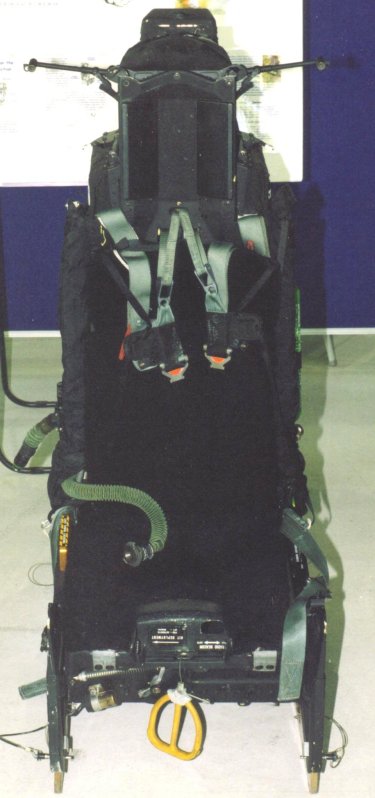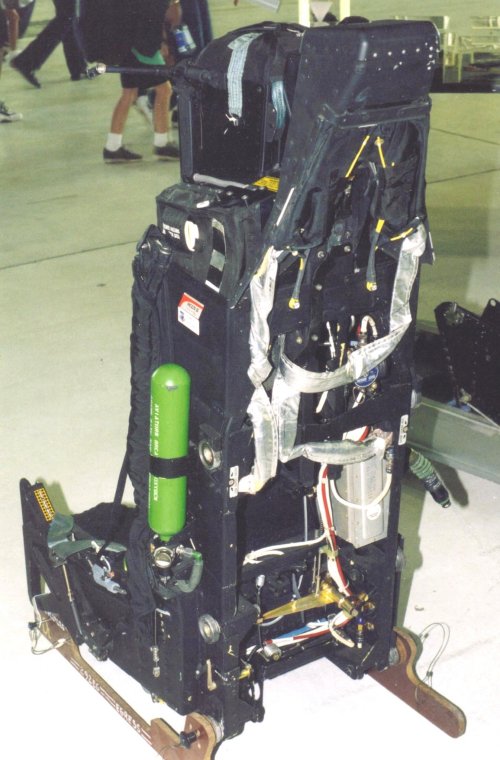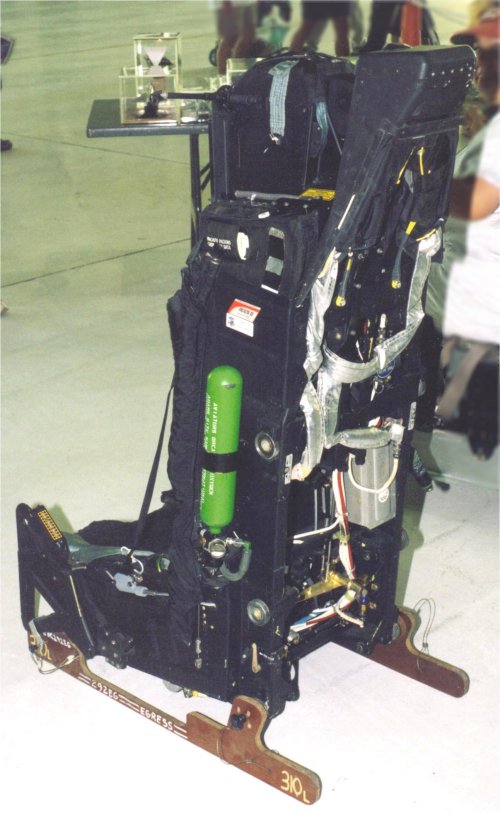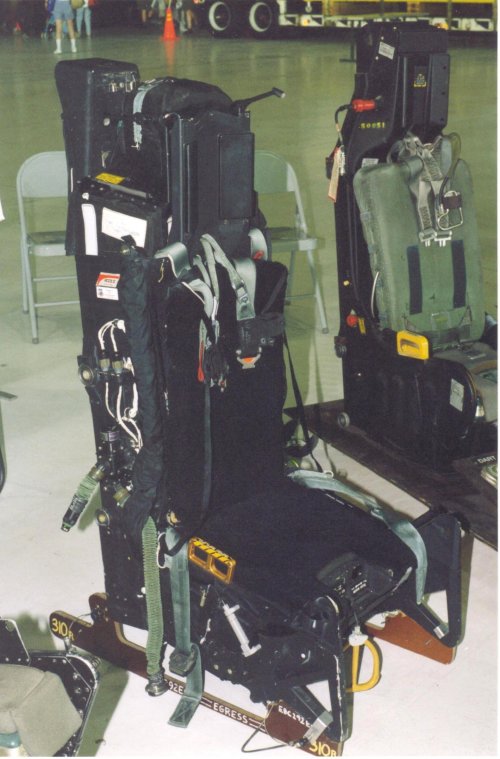The Ejection Site
F-22 Raptor ACES II Seat
 The seat shown here is a ACES II Seat as fitted to the F-22. This particular seat was photographed at the 1999 Edwards Airshow by a friend. The seat is not fully rigged and appears to be missing a few panels, however the modifications from the earlier versions of the ACES II are very visible.
The seat shown here is a ACES II Seat as fitted to the F-22. This particular seat was photographed at the 1999 Edwards Airshow by a friend. The seat is not fully rigged and appears to be missing a few panels, however the modifications from the earlier versions of the ACES II are very visible.
The F-22 Raptor is capable of supercruise flight, and is predicted to spend more of the flight time at higher speeds so this ACES II has been optimized to limit injuries at higher ejection dynamic pressure. The seat features a faster deploying drogue parachute which is housed in the enclosure behind the headrest. Arm restraints have been added in the form of a pair of nets rolled into nylon enclosures on either side of the seat backrest area. These nets are mechanically deployed as the seat moves up the rails by a set of nylon lines running through fittings on the risers just above the Frost fittings. The lines are attached to cockpit floor fittings and detach through shear-pin action when the arm restraints are fully deployed. The Frost fittings are the same type as fitted to the F-16 ACES II seats. The seat also features a larger oxygen bottle for longer lasting emergency oxygen supply. There appears to be a seat mounted regulator for the new combat support system which includes an anti-G vest as well as the anti-G pressure pants, and Combat Edge style helmet pressure system. Due to the larger oxygen bottle, both disconnects for the canopy jettison system have been relocated to the right side of the seat.
The cushions are have the Lambs wool dress covers on the cushions which are also used on several other ACES II seats including later version F-15 seats.
The blast deflector plate at the base of the seat is missing, as is the cover for the front initiators. The survival kit is not fitted, and the parachute headrest pitot tubes are deployed. These pitot tubes are being refit into previous seats as well. The pitots are mechanically deployed (spring-loaded) as the seat moves up the rails. They are held in place by a cam that rides inside the rails. When the cam leaves the rails, a pin is retracted and the spring deploys the pitots.
Thanks to my friend for the photos, and Gordon Cress for technical information.
1 / 6

Front view
2 / 6

3/4 Left Rear #1
3 / 6

3/4 Left Rear #2
4 / 6

3/4 Right rear
5 / 6

Front Right
6 / 6

USAF photo of a high speed sled test ejection
❮
❯
 The seat shown here is a ACES II Seat as fitted to the F-22. This particular seat was photographed at the 1999 Edwards Airshow by a friend. The seat is not fully rigged and appears to be missing a few panels, however the modifications from the earlier versions of the ACES II are very visible.
The seat shown here is a ACES II Seat as fitted to the F-22. This particular seat was photographed at the 1999 Edwards Airshow by a friend. The seat is not fully rigged and appears to be missing a few panels, however the modifications from the earlier versions of the ACES II are very visible. 




